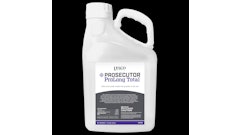DOWNLOAD THE PDF *Save to your desktop for easy reading & reference
If you hear “clover, sedge and dollarweed” and think “oh my!” you’re not alone. Recent changes in home buying patterns and home maintenance trends are making tough-to-control weeds like these an even bigger concern for lawn care operators (LCOs) in 2024. All-cash homebuyers are on the rise and they’re coming in with money (and vision) for their landscapes. Since the pandemic, homeowners have invested more in personal outdoor spaces, and that trend is showing no signs of stopping. Add in that the average property size is shrinking, and you’ll find that cash-flush, outdoors-loving home buyers and owners are making more demands of their limited space – and their lawn care companies. In other words: No weeds allowed.
Recognition herbicide from Syngenta, an ALS-inhibitor for warm-season turf, controls more than 40 weeds including all major versions of the pesky “big three” above. What’s unique about it is that it controls sedges, broadleaves and grassy weeds in sensitive grasses. That’s especially important with this new trend toward homes prioritizing pristine lawns. The challenge, as any LCO in the Southeast knows, is there aren’t a lot of products on the market that are safe for St. Augustinegrass and zoysiagrass and that check all the boxes. Jay McCurdy, Ph.D., associate professor and turfgrass extension specialist at Mississippi State University, has spent a decade evaluating herbicides during the development process. Even he’s never seen anything like this. “There are remarkably few new herbicides entering the market and even fewer that have the unique combination of an active ingredient (AI) that we are really familiar with, in this case trifloxysulfuron-sodium, in combination with a safener,” McCurdy explains.
DOWNLOAD THE PDF *Save to your desktop for easy reading & reference
If you hear “clover, sedge and dollarweed” and think “oh my!” you’re not alone. Recent changes in home buying patterns and home maintenance trends are making tough-to-control weeds like these an even bigger concern for lawn care operators (LCOs) in 2024. All-cash homebuyers are on the rise and they’re coming in with money (and vision) for their landscapes. Since the pandemic, homeowners have invested more in personal outdoor spaces, and that trend is showing no signs of stopping. Add in that the average property size is shrinking, and you’ll find that cash-flush, outdoors-loving home buyers and owners are making more demands of their limited space – and their lawn care companies. In other words: No weeds allowed.
A UNIQUE SOLUTION
Recognition herbicide from Syngenta, an ALS-inhibitor for warm-season turf, controls more than 40 weeds including all major versions of the pesky “big three” above. What’s unique about it is that it controls sedges, broadleaves and grassy weeds in sensitive grasses. That’s especially important with this new trend toward homes prioritizing pristine lawns. The challenge, as any LCO in the Southeast knows, is there aren’t a lot of products on the market that are safe for St. Augustinegrass and zoysiagrass and that check all the boxes. Jay McCurdy, Ph.D., associate professor and turfgrass extension specialist at Mississippi State University, has spent a decade evaluating herbicides during the development process. Even he’s never seen anything like this. “There are remarkably few new herbicides entering the market and even fewer that have the unique combination of an active ingredient (AI) that we are really familiar with, in this case trifloxysulfuron-sodium, in combination with a safener,” McCurdy explains.
THE SAFENER IS THE DIFFERENCE MAKER.
This is a new approach: reengineering existing products to meet unique needs in the market and new challenges that arise. The proprietary safener, metcamifen, is one thing that makes Recognition so special. It changes the metabolism of the herbicide within certain species, which allows for use in St. Augustinegrass and safens effective rates of Fusilade® II herbicide in St. Augustinegrass and zoysiagrass. “It works!” McCurdy says. “We’ve spent a lot of time demonstrating it in field trials.” Perhaps more familiar to the golf market, the active ingredient in Recognition is also found in Monument® 75WG herbicide from Syngenta, which has long been trusted for its efficacy. The same amount of AI per acre is applied with Recognition or Monument, but Recognition has a lower concentration and is therefore applied at a higher rate. This makes it easier to measure for small acreages or spot-treatment applications.
“I think this is opening peoples’ eyes to other uses of safeners, and what we see is Syngenta is really challenging the typical model of how we safen products on sensitive grasses,” McCurdy lauds.
RECOGNITION IS EVEN BETTER WHEN TANK MIXED.
Recognition is a powerful tool for LCOs on its own. The impact is even more significant when tank mixed. In combination with Turflon® Ester Ultra (triclopyr), Recognition can control dollarweed with a single application, and the safener in it makes Turflon Ester Ultra useable on St. Augustinegrass. “We’re talking about Fusilade at rates that are very effective and have never been safe on either species,” McCurdy adds. “We really didn’t have many control measures for bermudagrass within St. Augustinegrass – in fact there was really only one, ethofumesate, and it wasn’t labeled for many situations other than sod production.” Recognition + Fusilade II also suppresses other problematic grass species like dallisgrass and goosegrass.
CUSTOMERS LOVE IT.
Recognition can be a quick application broadcast treatment that catches smaller, less visible weeds. Applications offer long-lasting results — which makes for happy customers. By tank mixing Recognition with Turflon Ester Ultra, not only do you speed up control, especially on mature weeds, but the combination of Recognition plus triclopyr also provides more complete control with longer lasting results. “The question is, can we make ‘shoulder season’ applications of Recognition in combination with Fusilade to control bermudagrass and still retain St. Augustinegrass and zoysiagrass tolerance?” McCurdy posits. “I’m pretty sure we can.”
LAWN CARE OPERATORS SAVE TIME.
All of that saves LCOs time explaining things to customers. Customers don’t need to know about phytotoxicity. They don’t need to know when and how to water post-application. Meanwhile, labor-strapped LCOs can make easy tank mixes and spray efficiently where they once would have depended on backpack applications. And it’s not just for customers on-site. For sod farms and for your own pallets of sod, what used to take days to do is now done in hours — a real game-changer. ALS-inhibiting herbicides are active at very low use rates, and because of that they don’t take up a lot of shelf space and they’re easy to transport. As lawn care trends go, this one is a win-win. “It’s such a novel solution to a real problem experienced by the lawn care industry,” McCurdy says.
DOWNLOAD THE PDF *Save to your desktop for easy reading & reference














